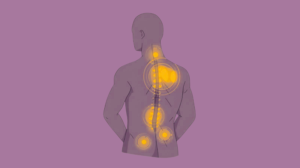Joint pain is no longer just an “old age” issue. Millions of people in their 30s and 40s are increasingly experiencing joint stiffness, aches, and discomfort, often triggered by a sedentary lifestyle, poor nutrition, overuse injuries, or chronic inflammation. But the good news is, your daily diet can play a powerful role in managing and reducing joint pain. By incorporating anti-inflammatory and nutrient-rich foods, you can support joint health, reduce swelling, and promote faster healing after strain or injury.
In this guide, we’ll explore how you can manage joint pain through nutrition, what foods to eat, what to avoid, how supplements can help, and practical tips to enhance recovery.
What Causes Joint Pain?
Joint pain can arise from several conditions, including arthritis, tendonitis, bursitis, autoimmune diseases, and general wear-and-tear. At the core of most chronic joint pain lies inflammation, the body’s natural response to injury or infection. But when inflammation becomes persistent, it begins to damage healthy joint tissue, leading to stiffness, swelling, and pain.
How Does Inflammation Affect Your Joints?
When you injure a joint or develop an inflammatory condition like osteoarthritis or rheumatoid arthritis, your body sends immune cells to the area. These cells release chemicals that cause swelling and pain to protect the joint. In a healthy response, inflammation resolves quickly. But in chronic conditions, the inflammation lingers, damaging cartilage and connective tissues over time.
Reducing this inflammation is key to minimizing joint discomfort, and that’s where diet comes in.
The Anti-Inflammatory Power of Food
Many whole foods contain bioactive compounds that naturally fight inflammation. These include:
- Polyphenols: Found in fruits, vegetables, and teas.
- Omega-3 fatty acids: Found in fatty fish and seeds.
- Antioxidants: Found in berries, leafy greens, and spices like turmeric and ginger.
By focusing your diet on anti-inflammatory foods, you can not only reduce existing joint pain but also prevent future flare-ups.
Top Foods That Help Manage Joint Pain
Fatty Fish (Salmon, Mackerel, Sardines)
Rich in omega-3 fatty acids, fatty fish help reduce joint stiffness and swelling. Omega-3s suppress the production of enzymes and molecules that cause inflammation.
Vegetarian alternatives: Flaxseeds, chia seeds, walnuts, and hemp seeds.
Turmeric
Turmeric is a golden spice with powerful anti-inflammatory properties, thanks to its active compound, curcumin. Research has shown that curcumin can significantly reduce symptoms in people with osteoarthritis.
Add turmeric to curries, teas, or smoothies for daily relief.
Reference:
Panahi, Y., & Saadat, S. (2016). Curcumin as an adjunct to pharmacological therapy for the treatment of osteoarthritis: A review of clinical studies. Journal of Medicinal Food, 19(4), 364-370. https://www.ncbi.nlm.nih.gov/pmc/articles/PMC5074405/
Ginger
Ginger contains gingerol, a compound known for its anti-inflammatory effects. Studies suggest that regular intake of ginger can ease pain and improve mobility in people with joint disorders.
Use it fresh in cooking or brew as ginger tea.
Reference:
Ghorbani, A. (2017). Anti-inflammatory effects of ginger in musculoskeletal diseases: A review of current research. Journal of Ethnopharmacology, 194, 529-536. https://www.ncbi.nlm.nih.gov/pmc/articles/PMC5713156/
Berries and Leafy Greens
Foods like blueberries, spinach, and kale are loaded with antioxidants, which combat oxidative stress – a key driver of joint inflammation.
Aim to include at least one serving of berries and leafy greens daily.
Whole Grains
Unlike refined grains, whole grains like brown rice, quinoa, and oats reduce levels of C-reactive protein (CRP), a marker of inflammation in the blood.
Replace white bread and pasta with whole grain options.
The Role of Collagen in Joint Health
Collagen is the most abundant protein in the body and is a key structural component of cartilage, which cushions joints. As we age, our collagen production declines, leading to stiffness, joint pain, and slow recovery from injuries.
Best Sources of Collagen:
- Bone broth: Rich in natural collagen and amino acids.
- Collagen peptides (supplements): Easily absorbed by the body.
- Vitamin C-rich foods: Help the body produce more collagen naturally.
Reference:
Clark, K. L., et al. (2008). Effects of collagen hydrolysate on joint pain: A systematic review of clinical studies. Journal of Arthritis, 2008. https://www.ncbi.nlm.nih.gov/pmc/articles/PMC4051492/
How Protein Supports Joint and Muscle Recovery
Protein is essential for repairing tissues, including muscles and ligaments that surround the joints. Insufficient protein intake may delay recovery and increase injury risk.
Best Protein Sources:
- Plant-based: Lentils, beans, tofu.
- Animal-based: Chicken, eggs, dairy.
- Supplements: Whey or plant protein powders for active individuals.
Aim for at least 1 gram of protein per kg of body weight daily.
Micronutrients Essential for Joint Health
Calcium
Supports bone density and structure.
- Sources: Milk, yogurt, almonds, tofu, broccoli.
Vitamin D
Helps in calcium absorption and reduces inflammation.
- Sources: Sunlight, egg yolks, fortified foods, supplements.
Magnesium
Relaxes muscles and supports healthy nerve and joint function.
- Sources: Leafy greens, nuts, seeds, whole grains.
Foods to Avoid for Joint Pain Relief
Certain foods can worsen inflammation and joint discomfort. These include:
- Sugary drinks and snacks: Increase inflammatory markers.
- Processed meats: Contain advanced glycation end products (AGEs) linked to joint degeneration.
- Refined carbs: White bread, pastries, pasta.
- Trans fats: Found in fried and packaged foods.
Tip: Always check ingredient labels and limit added sugars and hydrogenated oils.
Supplements That May Help
In addition to a nutrient-rich diet, certain supplements can support joint health:
- Turmeric/Curcumin capsules
- Collagen peptides
- Glucosamine and chondroitin
- Omega-3 fish oil
- Boswellia extract (an Ayurvedic anti-inflammatory herb)
Always consult your doctor before starting new supplements, especially if you are on medication.
Lifestyle Tips to Complement Your Nutrition
- Stay hydrated: Water lubricates joints and removes toxins.
- Exercise regularly: Focus on low-impact workouts like walking, swimming, and yoga.
- Maintain a healthy weight: Reduces pressure on joints, especially knees and hips.
- Sleep well: Rest supports tissue repair and reduces inflammation.
Conclusion
Managing joint pain doesn’t always require heavy medication. With the right nutritional choices, you can take control of inflammation, strengthen joint structures, and reduce the discomfort that affects your daily life. Start by including anti-inflammatory foods like turmeric, ginger, fatty fish, and leafy greens in your meals. Support your collagen levels, get enough protein, and avoid processed, sugary foods.
Your plate can be your first line of defense against joint pain and by making smarter food choices, you’re investing in a healthier, more active future.
References
- Panahi, Y., & Saadat, S. (2016). Curcumin as an adjunct to pharmacological therapy for the treatment of osteoarthritis: A review of clinical studies. Journal of Medicinal Food, 19(4), 364–370. https://www.ncbi.nlm.nih.gov/pmc/articles/PMC5074405/
- Ghorbani, A. (2017). Anti‑inflammatory effects of ginger in musculoskeletal diseases: A review of current research. Journal of Ethnopharmacology, 194, 529–536. https://www.ncbi.nlm.nih.gov/pmc/articles/PMC5713156/
- Clark, K. L., Sebastianelli, W., Flechsenhar, K. R., Aukermann, D., Meza, F., Millard, R. L., … & Deitch, J. R. (2008). 24‑Week study on the use of collagen hydrolysate as a dietary supplement in athletes with activity-related joint pain. Current Medical Research and Opinion, 24(5), 1485–1496. https://www.ncbi.nlm.nih.gov/pmc/articles/PMC4051492/
- Veronese, N., Koyanagi, A., Stubbs, B., Cooper, C., Guglielmi, G., & Reginster, J.-Y. (2019). Vitamin K and osteoarthritis: A systematic review. Reumatismo, 71(1), 28–36. https://doi.org/10.4081/reumatismo.2019.1095
- Messier, S. P., Loeser, R. F., Miller, G. D., Morgan, T. M., Rejeski, W. J., Sevick, M. A., … & Pahor, M. (2004). Exercise and dietary weight loss in overweight and obese older adults with knee osteoarthritis: The Arthritis, Diet, and Activity Promotion Trial. Arthritis & Rheumatism, 50(5), 1501–1510. https://doi.org/10.1002/art.20256
- Conquer, J. A., Martin, B. R., & Watson, P. A. (2000). Effects of fish oil supplementation on joint stiffness and symptoms of osteoarthritis. The Journal of Rheumatology, 27(8), 1972–1978. https://pubmed.ncbi.nlm.nih.gov/10954632/
- Hu, F. B. (2002). Dietary pattern analysis: A new direction in nutritional epidemiology. Current Opinion in Lipidology, 13(1), 3–9. https://doi.org/10.1097/00041433-200202000-00002
- Hu, F. B. (2010). Summary of the evidence regarding the effects of omega‑3 fatty acids on cardiovascular disease risk: An American Heart Association Science Advisory. Circulation, 115(13), 1878–1885. https://doi.org/10.1161/CIRCULATIONAHA.106.181498
- Hu, F. B. (2002). Dietary pattern analysis: A new direction in nutritional epidemiology. Current Opinion in Lipidology, 13(1), 3–9. https://doi.org/10.1097/00041433-200202000-00002























